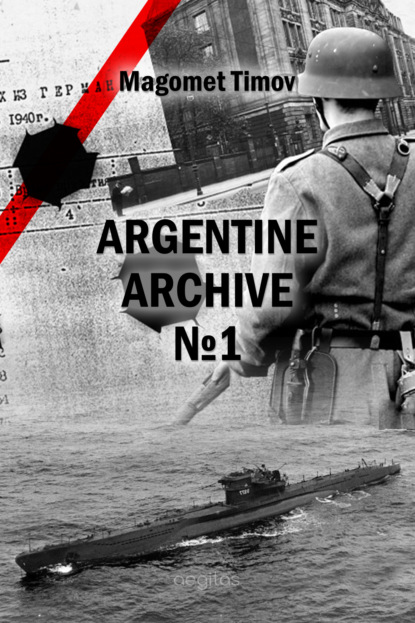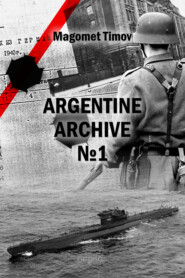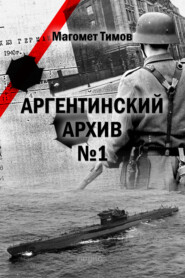По всем вопросам обращайтесь на: info@litportal.ru
(©) 2003-2025.
✖
Argentine Archive №1
Настройки чтения
Размер шрифта
Высота строк
Поля
16:20
Special Object of the MGB: 101
School
Pavel Anatolyevich Sudoplatov threw open the curtains in the study and froze for a second. Fiery September came into its own outside the walls of the building. The crimson of fall enveloped the suburbs, and the forests stood in their colorful splendor, but the sun was baking with summer-like heat, and several muscular guys in shorts and t-shirts were chasing the ball on the football ground.
Sudoplatov turned around and looked at the cadets, frozen in attentive anticipation. Skiff and Tom each took a desk in the first row. Their notes were closed, it even seemed they both were holding their breaths. Sitting in the ‘gallery’ – the back row – Kotov grinned at something through his mustache.
“Well, that’s it, lads,” the Major General said sternly, giving meaning to the situation. “Today, I’ll brief you on the upcoming mission. This is necessary, not only so that we imbue you with all the importance and complexity of the task, but also so that you understand the essence of the preparation that you will undergo in the future.”
He walked over to the blackboard and chalked ‘1943’ on the black surface.
“So, in ’43, the very middle of the Great Patriotic War, a turning point was about to occur. Soon, we would chase the Krauts along Piterskaya street or the old Smolenskaya, as we once did with Napoleon, doesn't matter…
“At this time, the famous physicist Niels Bohr fled from German-occupied Denmark to neutral Sweden. Through his equally famous colleagues, Lise Meitner and Hannes Alfvén, he turned to the Soviet Government and our physicists, in particular Kapitsa. He said that development was underway in Germany of super-powerful weapons based on the fission of an atomic nucleus. This wasn’t a complete surprise for us. The first time our scientists had heard about this back in 1940, they felt that the current technological base could not create such a weapon. Nevertheless, the Commission of the USSR Academy of Sciences for the Study of Nuclear Energy Problems took note. Under Professor Khlopin, they recommended the Government and all specialized scientific institutions keep track of all publications on this topic abroad.
“Before 1943, the British had already tried to launch the ‘Pipe Alloy’ project to create a uranium bomb. Our information showed they had absolutely no luck with this. The attitude of our command and government changed radically when information came from America about the first nuclear chain reaction that Fermi carried out. Clearly, the creation of a superbomb was not far off. They tasked us with coordinating the activities of various intelligence units and throwing all our resources into obtaining materials from the American research. Since it was the Americans, in the opinion of our leading scientists, who were the most advanced in this matter.
“The head of the American nuclear program was Oppenheimer. He was a 44-year-old physicist who wasn’t even a Nobel laureate. This surprised our scientists quite a bit, especially since he worked side-by-side with the same Niels Bohr, who advocated the termination of all research in this direction!
“I don’t need to go into the details of the nuclear race right now. Just imagine, the most brutal war known to mankind had already crippled the country. I myself, besides atomic espionage, also had to organize a partisan movement…
“Under these circumstances, suffering from a near-complete lack of financial, material and human resources, our scientists had to create from scratch a new branch of science and industry – nuclear power. We were helped to a great extend by intelligence collected by our brave illegal intelligence officers, who collected information about the so-called ‘Manhattan Project’. By your future colleagues, by the way. Thanks to them, we have not lagged far behind the United States in the development of nuclear weapons and could maintain parity and avoid a new, now thermonuclear war.”
Sudoplatov fell silent, walked over to the teacher's table, then poured into a glass from a half-empty decanter and drank it. He swallowed greedily as if reliving all the tumultuous events of those recent, terrible years…
“Well, that’s just words,” he said sharply as if at once sweeping aside the affairs of bygone days and urging people to turn to the present day. “There was a war going on, we had to solve many problems simultaneously, and we somehow got through it. By focusing on the Los Alamos laboratories, we somehow lost sight of the German physicists. They, too, turned out to have advanced quite far in their research. Fission of the atomic nucleus was discovered in Germany by Hahn and Strassmann back in 1938, independent of the work of scientists in other countries. Only when other countries generated similar reports, did the idea of turning purely scientific discoveries into a superweapon for the Third Reich take root.
“Given how the technology developed in Germany, the focus there was on creating a nuclear reactor. The Germans were quite successful. Constant Allied bombing, which destroyed their heavy water plants, frequently slowed their research down.
“Yet, in 1940, Germany was head and shoulders above the rest of the countries taking part in nuclear research. The lack of raw materials initially created some problems. Yet, after Hitler annexed the Sudetenland of Czechoslovakia in 1938, he had the uranium mines near the town of Jachymov at his disposal. The occupation of Belgium also gave him about a thousand tons of uranium oxide, imported by the Belgians from their African colonies. Invading Norway brought Germany the only heavy water plant in the world at that time, which is used to slow down nuclear reactions. All this together allowed the German Werner Heisenberg to create the world's first ‘uranium machine’, as the nuclear reactor was then called.
“The Japanese attack on Pearl Harbor and America's entry into the Second World War made the development of atomic weapons a priority for the United States. In Germany, with its lack of resources, funding for nuclear research became a side issue. Hitler did not believe in creating an atomic bomb until the end of the war on the Eastern Front. The hardest campaigns of the winter of 1941-42 and the defeat of Hitler's troops at Stalingrad showed that the war will be protracted. British secret services also conducted the secret operation called ‘Gunnerside’, during which they put out of action that same heavy water plant in Norway. Norwegian partisans destroyed the remaining stocks of heavy water, or deuterium oxide. German researchers finally switched to ‘broke’ mode: no money, no resources. Meanwhile, the end of the war was near.







